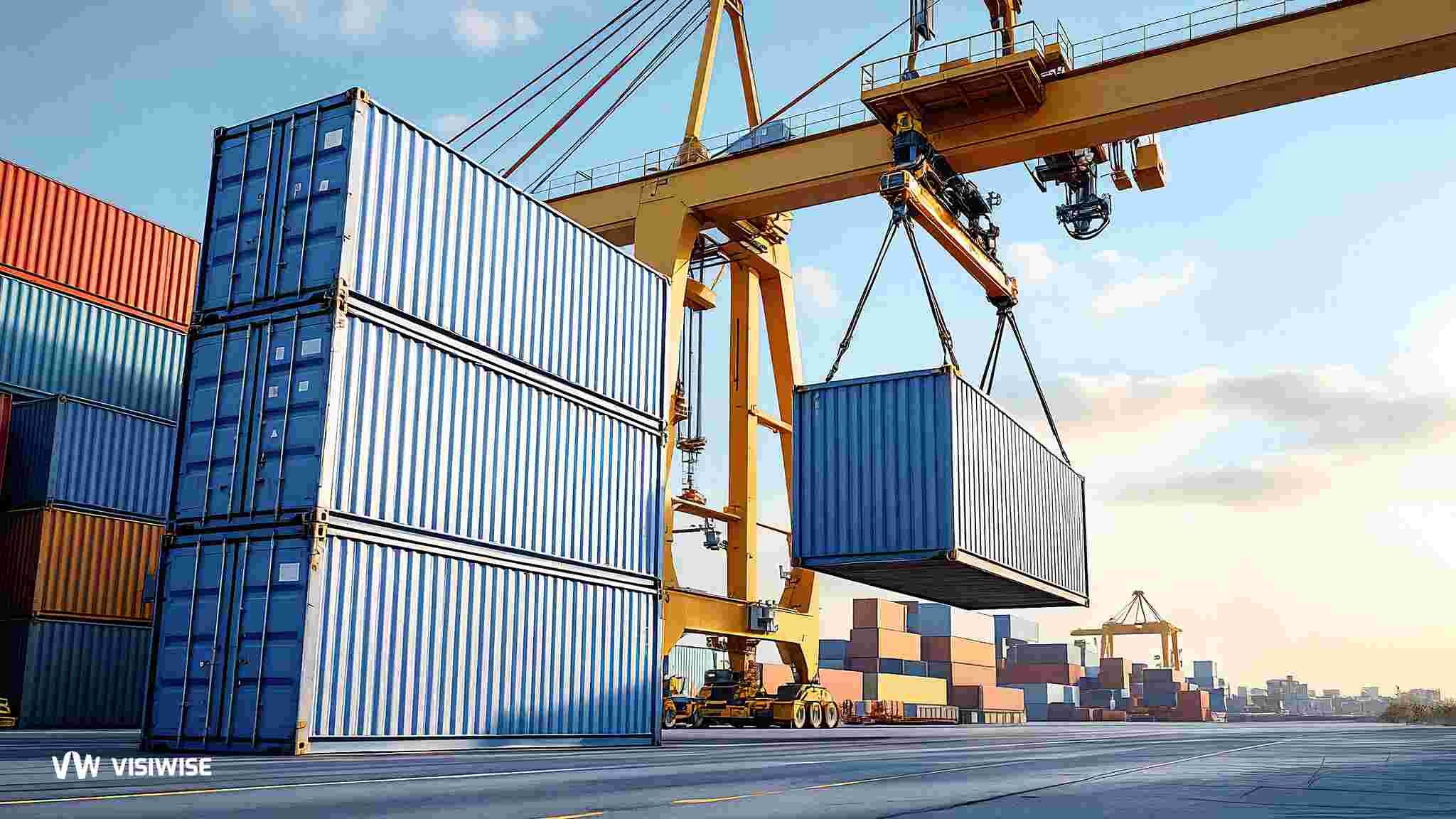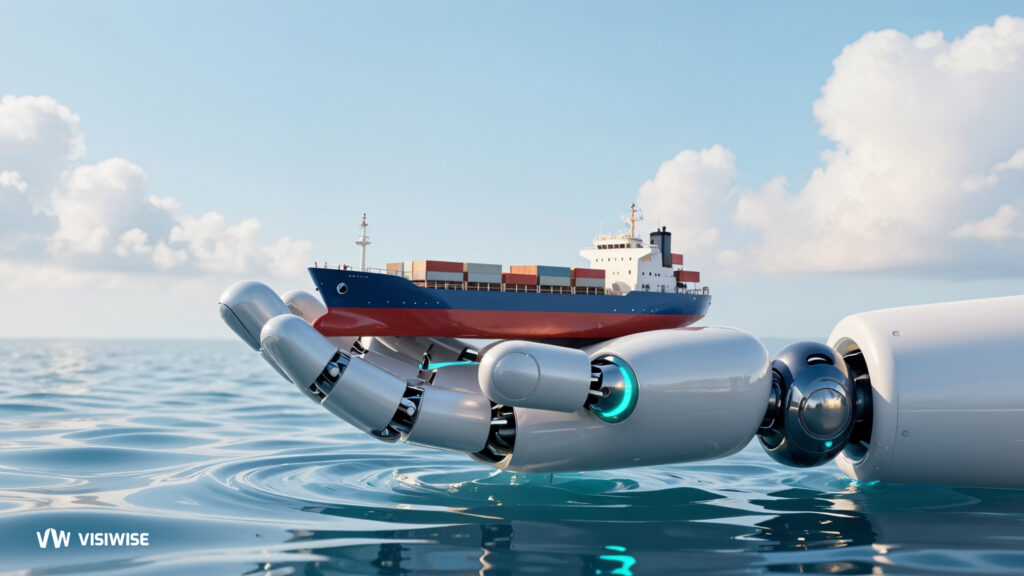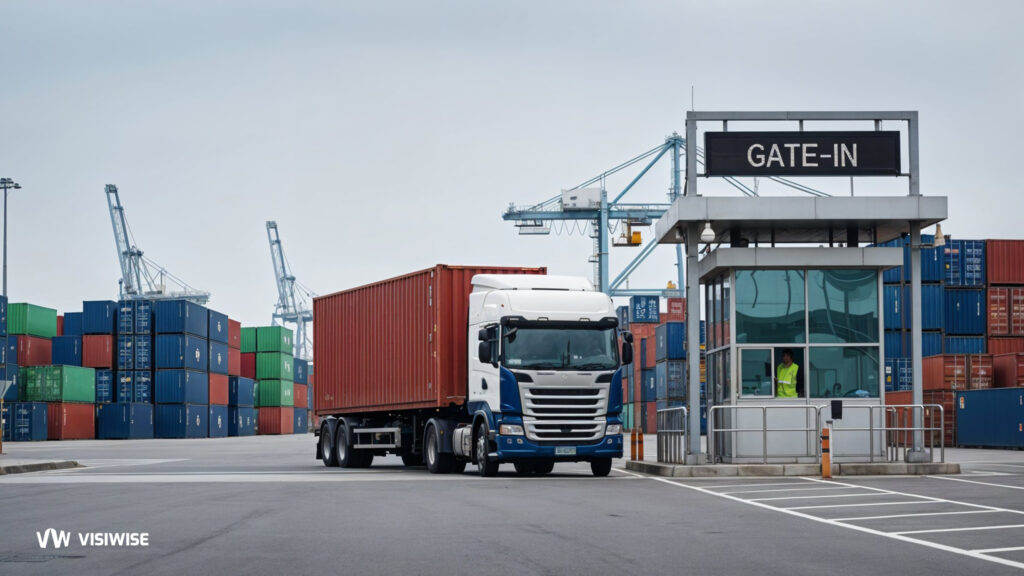Shipping containers for global trade need no introduction, but transporting them safely requires some consideration. Before stacking shipping containers, whether on a ship or on land, requires understanding certain things. In this guide, we will explore some points to consider when stacking shipping containers.
Container Certification and Inspection Standards (CSC & IICL)
CSC Certification: Ensuring Container Safety Compliance
Shipping containers must pass a CSC inspection and hold a valid CSC plate and certificate to be deemed safe for shipping. CSC stands for “Container Safety Convention” and in very basic terms, is a bit like an MOT for a car, confirming the container is safe for its intended use and structurally sound. CSC rules were internationally agreed governing the design and repair standards for all ISO shipping containers.
Inspection Standards: What a CSC Check Involves
The person who carries out the CSC inspection on the container should hold valid IICL (Institute of International Container Lessors) certification which shows they have the correct and most recent understanding of container safety standards.
Following the 5th Edition repair manuals for steel freight containers when a CSC inspection is carried out, the inspector will check all external walls and the underside of the container for damage and wear that will or could imminently affect the containers strength. They will also check the internal areas of the structure for damage to the marine ply wood floors and lashing points.
Structural Repairs: Fixing Damage to Meet IICL Guidelines
If a dent is too deep or protrudes out of the ISO frame of the shipping container, it should be repaired to IICL standards. This is also the case for any rust patches, holes, damage to floor boards, bottom rails, forklift pockets, corner posts and castings. CSC inspections can be carried out for a small fee in most large container depots in the UK. Once we know that a container is safe to be used as a shipping container, the position in which it will take in a container stack is then assessed.
Strategic Planning for Container Stacking
Throwing containers onto a ship isn’t like stacking firewood. Do it wrong, and you’ve got a dangerous mess. A solid plan keeps things stable, balanced, and safe—no surprises at sea.
First, know your ship. How much can it actually carry? What’s the cargo like? Be aware of the ship’s dimensions and cargo to decide the amount of weight and number of containers it can carry in one go.
Stack smart: heavy boxes at the bottom, lighter ones on top. And sequence matters—load in the right order, and everything moves quicker.
And don’t just grab any equipment. Cranes, forklifts—whatever you’re using, make sure it’s the right fit for the job.
Container Weight Limits and Stacking Capacity
Container Weight Capacity: Know the Limits
Shipping containers can hold tons of cargo depending on their size and weight. There is a pre-decided maximum weight that containers can hold. Let us learn the weight limit during container stacking:
A 40-foot empty container tips the scales at 3,740 kg, while a 20-footer comes in at 2,250 kg. But here’s what really matters—their max payloads. A 20-foot container can haul up to 28,230 kg of cargo. And a 40-foot container handles up to 26,740 kg.
The Container Safety Convention mentions a ship’s maximum weight on the CSC plate (Container Security Certificate).
What Is Stacking Weight and Why It Matters
Stacking weight is the maximum weight that can be easily and safely stacked on other containers. It optimizes space and helps carry as much weight as possible but securely. Container stacking is done vertically, one above another, and the maximum weight of cargo stacking must be decided while keeping safety regulations in mind.
The weight of stacking depends on the ship’s structural strength. So, every ship’s weight limit is decided according to size, design, and type of container.
The number of containers involved in stacking decides the height, which affects their stability. Containers are placed at the corners to ensure optimal stability. The four corner posts must align with the stack above them. For instance, if there is a 40-foot container, place it above two 20-foot containers to maintain stability.
How Many Containers Can You Stack? ISO Guidelines Explained
According to ISO guidelines, stacking of nine containers is allowed on top of one another, depending on the maximum weight the bottom container can hold. It is important to increase the weight slowly so that it does not overload at once. Remember how other factors, such as wind loading and weight distribution, will affect your container stacking and arrange accordingly.
Onboard Stacking Limits: Tolerances and Deck Load Capacity
The containers stacked on a ship will be placed in the stack of the same size, 20fts on top of 20fts and 40fts on top of 40fts. The units are then twistlocked or lashed together in their columns and the outer units of the block will be lashed to prevent any units tipping as they sway on the ocean.
The height that the containers can be safely stacked will be deemed by the tolerances of the shipping container and also the load bearing abilities of the ship’s deck. Some large container ships can carry containers stacked up to nine high (9 x 20ft standard containers (20TEU) loaded to max capacity equals a massive 274 tonnes per stack!), whereas some smaller vessels don’t allow stacking at all.
The Role of Load Distribution in Container Stacking
Load distribution is the most important factor for efficient transportation and a secure journey. If the cargo packing is not proper or the arrangement of freight containers is not adequate, it can lead to accidents or damage to the product.
Even weight distribution is important for maintaining stability and security. You can do this by organizing heavy-to-lightweight containers. Arrange your containers equally over the area, not overloading a particular area. You can calculate the container’s maximum payload volume using the weight limit. Therefore, container stacking must be proportional to load distribution.
Secure your cargo with dunnage (a padded material that protects cargo during shipping), blocking, and tying to avoid vibration or movement, as described by the CTU Code (Code of Practice for Packaging of Cargo Transport Units).
Weight and height affect the center of gravity, so you must stack the containers accordingly to maintain them. Keep the heavy items at the bottom and light above them—this will reduce the center of gravity. Therefore, there is less fear of tipping or falling off goods.
Stacking at Sea: Weight Distribution and Container Positioning
When shipping containers are stacked, it creates a massive amount of pressure on the bottom containers as well as on the deck of the container ship in which the stack is held. Shipping containers are designed to be loaded on the four corner posts and castings.
These points can hold a significant amount of weight where as the top and bottom rails of a shipping container have no structural strength and should not be stacked upon. Though all shipping containers are built to the same standards, containers are made by different manufacturers so may have different weight tolerances. Its imperative that the containers at the bottom of a stack can withstand the pressure from the stacked containers above.
Container Stacking Methods: Onboard vs. On Land
Stacking Techniques: On Land vs. At Sea
On Land
Before container stacking, check all the parts for damage or rusting. If you discover constructional problems, you can fix the container, remove it, or replace it from the stack.
Long maritime journeys subject vessels to sea winds and salt, which can lead to corrosion. As a result, it is crucial to examine the containers from inside and outside for corrosion in all parts before stacking containers. Shipping containers with poor, sturdy structures might harm the safety of the shipping and the workers on the ship.
Always put one corner post on top of the other to maximize stability. The containers above and below the posts must be compatible to ensure structural stability.
You can also use lashing rods to hold the containers so they do not fall.
On a Ship
An environmentally sustainable container ship can have two types of stowage: “fore and aft” and “athwartships.” There are different ways to store containers, such as longitudinally, fore and aft, and horizontally at the ship’s center at right angles. The ship’s size and weather conditions determine your chosen container stacking method.
Fore and aft give additional protection from severe winds, smashing waves, and turbulent waters.
Traveling across the water is more time-consuming than traveling on land. You can use cell guides below the deck to keep containers stable, while vertical guide rails, which direct products through channels in road or rail systems, are essential for securing shipping containers. In addition, lashing rods and twist locks secure and prevent the containers from sliding.
Land-Based Stacking: Safety, Wind Risks, and Height Restrictions
Of course, the rules and regulations for stacking containers on land (in depots or on site) differ greatly. Theoretically, the container load will be lighter so they should be able to be stacked higher however, wind loading, and other environmental aspects will affect the stability of the stack and add various limitations. Most container delivery drivers will only stack units to two or three high, both due to their hi-abs abilities and with the knowledge that a stack of three containers, stood on their own, will almost definitely tip over in high winds. It’s recommended that when stacking containers on land you follow the same procedure of checking the containers are structurally sound and that the bottom container can tolerate the pressure from the unit above. Stacked containers should always be locked together using twistlocks or stacking cones and should only be stacked with a container of the exact same size.
Preventing Container Collapse
Preventing Container Collapse: Forklift Safety Measures
Before using a forklift to load shipping containers, consider the following to prevent container collapse:
- Make sure the points stretch the whole length of the container. When transferring the unit up or down the stack, ensure it remains safely joined.
- Make sure the forks do not extend through the floor of the unit.
- Confirm that the forklift can handle the weight of the container.
If you fail to check these criteria, mishappenings, worker deaths or injuries, and high OSHA penalties can occur.
Essential Safety Tips for Container Stacking
Safety is the priority while loading and unloading the containers. So, there are some safety measures that you must follow while container stacking:
- There are some trends in the container depot for stacking, loading, and unloading. Train the workers at the shipping container depot and make them aware of all the rules and regulations to follow.
- Ensure the use of PPE (Personal Protective Equipment). The area for container stacking should not have any obstacles.
- Investigate all the parts and equipment regularly to prevent damage. Container inspection is mandatory; you cannot skip it.
- Maintain proper documentation of shipping, export products, and the number of products to be secure in transit. Also, follow the maintenance tips for shipping containers to last long.
- Properly label the containers with respect to the goods.
- Also, improve your tracking facilities to keep your management updated about your journey so that if any mishap happens, some people know.
Final Thoughts
Container stacking is a crucial part of the shipping industry. Maintaining compliance with weight limits and preventing accidents or damage by taking necessary precautions on time will help you stack efficiently. Always keep your containers in proportion to the strength of the ship and utilize relevant tools to ensure a secure journey.



